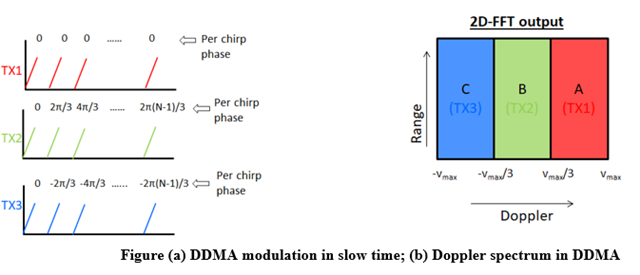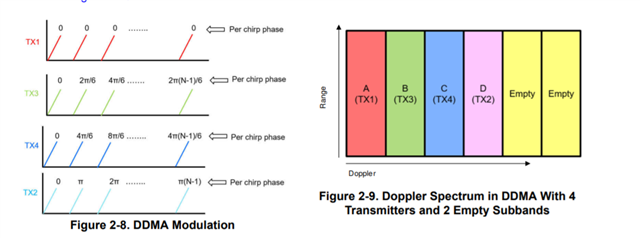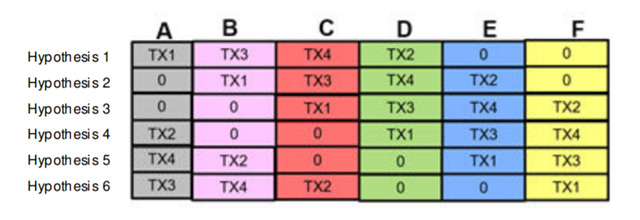Hi, In the doc "High-End Corner Radar Reference Design",the DDMA scheme is descriped as belows in the page 8:

but in the ../mmwave_mcuplus_sdk_04_02_00_01/ti/datapath/dpc/objectdetection/objdethwaDDMA/docs/doxygen/html/index.html,the DDMA is as below:

In the two picture, the DDMA modulation is identical,but the doppler spectrumn is different,which one is right?And why?
BR,
Rata



